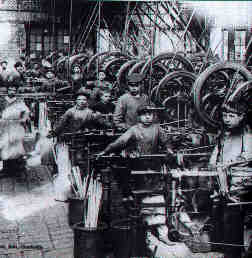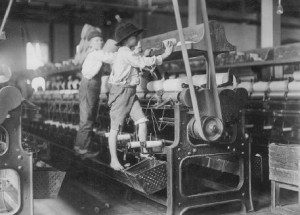One of the major reasons that brought change in the Victorian England was the industrial revolution during the 1800s which led to the emergence of numerous factories. The first operative factory can be traced by to 1721 but with industrialization, more and more factories can into existence.
Victorian London factories
The factories in Victorian times were set up in towns which have augmented into modern day cities. The use of steam-powered machinery further led to the expansion of factories. With a number of factories coming up, people migrated from the countryside to these towns in hope of finding a job in these factories. Manchester also known as Cottonopolis was the first industrial city.
As the years passed, a large number of people flocked to the cities in search for jobs which resulted in the cities getting over-populated. Despite the industrial growth, cities like London were not equipped to handle such a large population. Those who could not afford a better accommodation stayed in lodging houses while those who were in a position to spend more were rented rooms to stay in.
Working conditions in factories during the industrial revolution

The living conditions were so bad that the whole family had to stay in one room and at times two families were adjusted in a room. The changes can be attributed to the invention of machinery which drastically reduced the human labor. During the 19th century, production was primarily carried on in small mills that were water-powered. Robert Owen was a reformer who made efforts to improve the conditions for the workers.
The growth of factories indeed brought employment for some but it snatched away the earnings of those who were unskilled workers. During the Victorian period, families were large, mostly consisting of three generations staying together where only the men worked. Under such conditions, it was very difficult to sustain on very low wages.
Children’s working conditions in the industrial revolution
The parents thus were forced to send their children to work in factories and mines so that they can support their over burdened parents. The children were exploited for the cheap labor they provided. Many justified the engaging of children in factories by saying that they are helping the poor families to earn some extra money for their living.

The children were made to work for long hours like adults and the working conditions in the factories were pathetic with no room for ventilation. Children worked in textile mills, mines and chemical factories which were hazardous for these children who were exposed to a number of diseases. The factories were poorly lit. Candles were used to give the light source. Often these candles proved to be dangerous as they caused many of the fires.
The machinery used in the factories was the peril for accidents as the workers using them were not skilled enough. The industrial revolution indeed led to the emergence of factories and improved the standard of living of many people but, it also exposed the Victorian society to the social evils like Child labor which were eradicated after many years of struggle. Victorian child labour is a fact which can not be denied.